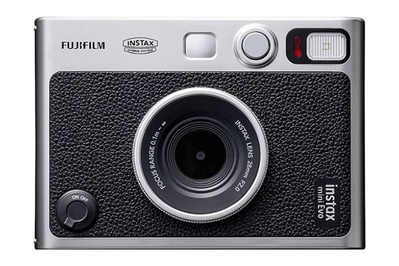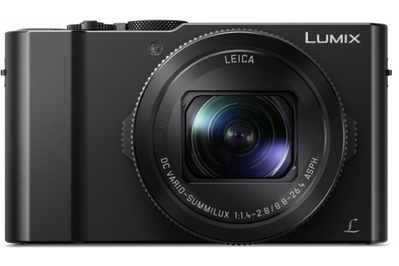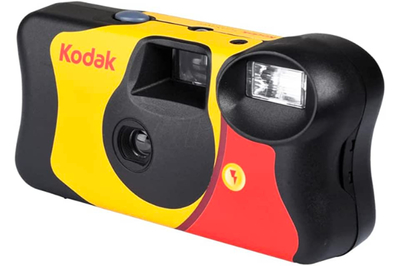
Gen Z Is Bringing Back “Vintage” Point-and-Shoot Cameras. Our Experts Weigh In.
Cell phone cameras are out. Vintage digital cameras are in. I don’t make the rules, but apparently Gen Z does.
Teens, celebrities, and influencers alike have been snapping up 20-year-old digital cameras to take lower-quality photos with high-quality vibes.
Ayo Edebiri’s 8.1-megapixel Sony Cyber-shot had a moment when The Bear actress handed it to her seatmate Carson Daly for safekeeping while she went onstage to accept her Emmy award. (Okay, so maybe cell phone photos aren’t entirely out—as you can see from the selfie Carson snapped—but they’re making room for their old-school brethren.)
Why people are going vintage

Although an element of “everything old is new again,” is definitely at play here, there’s a legitimate reason why people aren’t buying new, inexpensive, good-quality compact point-and-shoot cameras: They don’t exist.
As technology progresses, you can usually expect items to get cheaper. That’s not the case with cameras.
“We’re currently testing compact cameras that start at around $900 because that’s the direction the category is going in,” says supervising editor Ben Keough. “Camera manufacturers are releasing fewer and fewer cheap point-and-shoots because everyone already has a smartphone camera in their pocket that can produce images that look just as good.”
The special sauce here is that vintage cameras produce a grainy, often blown-out photo with flash flare, which makes the photo look atmospheric without a filter.
What to look for when buying a used camera
eBay is rife with used options, so if you’re hunting there or in any other secondhand environment, we have a few things for you to watch out for.
Search for “digital camera” and specific brands or collections, like Canon PowerShot, Sony Cyber Shot, Olympus, and Kodak. We’ve seen “as is” cameras going for less than $100 and in-good-used-condition cameras selling for less than $200.
Watch out for phrases such as “untested” and “for parts.” These are sometimes buried in a listing and often signify that the camera is not fully functional.
Most of these cameras use a rechargeable lithium-ion battery that comes with a separate plug-in charger. Ideally the camera you’re buying comes with two batteries, so you can swap in a fully charged one and not have any major break in shooting time.
Battery size is not standardized, so if you need to buy one separately, make sure it’s compatible with the exact model of your camera. I own two vintage Canons, and they use two slightly different-size batteries that are not interchangeable.
Camera companies typically caution against using non-OEM (aka third-party) batteries. However, finding original batteries for vintage cameras can be tough, and we’ve had good experiences with batteries from reputable third-party brands, most of which are made in China, Japan, or South Korea and contain roughly the same components. “Brands like Wasabi Power are totally fine. I’m a camera reviewer, and I use them in my new cameras,” says Ben.
If you’d prefer to buy a new camera
A few new cameras are available that can scratch the itch if you want something more modern, especially if your goal is to be on your phone less and in the moment more.
This small instant-and-digital hybrid camera delivers instant prints and a digital review screen, but at a premium cost.
We love the Fujifilm Instax Mini Evo because it produces both physical and digital pictures. You can have a memento into the moment and also preserve it for the future (and post to social media). “It offers all the analog charm of an instant camera but lets you choose which images to print onto Instax Mini Film using a small LCD screen,” co-author Arriana Vasquez says in the guide to the best instant camera.
Arriana is currently testing a screenless option aimed at kids going off to summer camp, so keep an eye out for that review as well. (I bought a cheapie point-and-shoot for my kids to use at camp, and the 8-year-old cracked the screen on day 1, so something a little more hardy sounds extremely promising.)
With fast autofocus and a convenient touch interface, it fits into a jeans or jacket pocket but produces photos and 4K video that rival DSLR output.
The Panasonic Lumix DMC-LX10, our pick for the best point-and-shoot camera, doesn’t produce that vintage-style photo, but it is an improvement on your phone’s camera. It doesn’t come cheap. But it can be worth the investment if you also want to shoot 4K video and have photos that are high-resolution enough to be blown up and framed.
Fujifilm’s QuickSnap camera is easy to use and consistently delivers the best results you can expect from a color one-time-use camera.
Kodak’s FunSaver is just as simple to use and consistent as Fujifilm’s QuickSnap.
For vintage-photo-quality with the added bonus of absolutely zero instant gratification, disposable film cameras are also coming back. “Film is where the vintage-look photo trend started and will always hold a special place in my heart,” says Phil Ryan, who wrote our guide. “It forces you to concentrate on the image you’re making and the moment you’re in instead of getting lost in yet another digital device.”
This article was edited by Erica Ogg.
Mentioned above
- Here is every Wirecutter pick we could find in The Bear’s first two seasons.‘The Bear’ Is Back. Here’s Every Wirecutter Pick We’ve Spotted in Carmy’s Kitchen.
- After further testing, we’ve added a slew of new picks, from high-capacity NiMH batteries (AA, AAA, AAAA) to high-power Li-ion batteries (AA, AAA) and more.The Best Rechargeable AA and AAA Batteries
- The best instant camera for taking high-quality, retro-cool photos is the Fujifilm Instax Square SQ40.The Best Instant Camera
- The Sony RX100 VII is the best choice for people who want a compact camera that produces significantly better photos and video than their smartphone.The Best Point-and-Shoot Camera
- Fujifilm’s QuickSnap Flash 400 and Kodak’s FunSaver one-time-use cameras will give you reliably great color results at your next party or gathering.The Best Disposable Cameras



